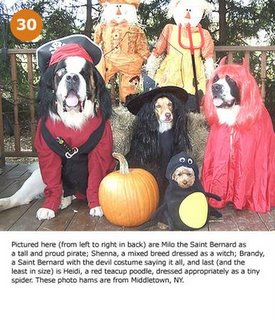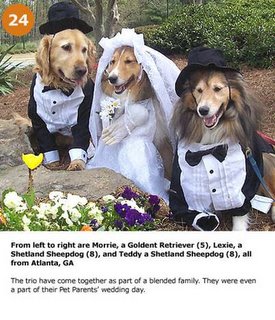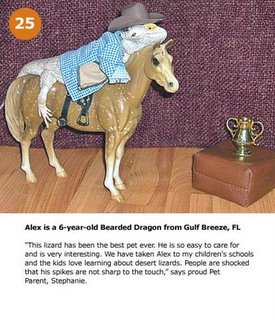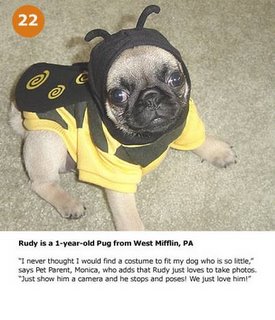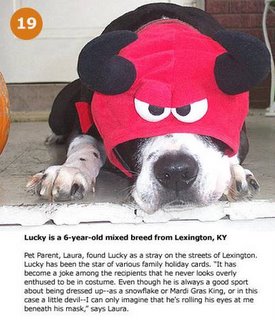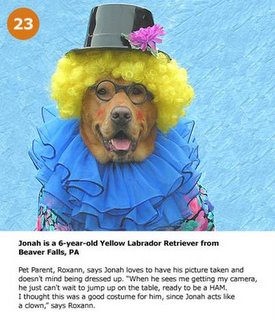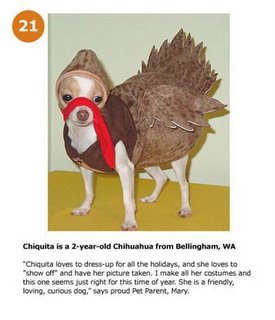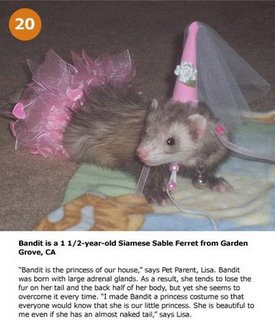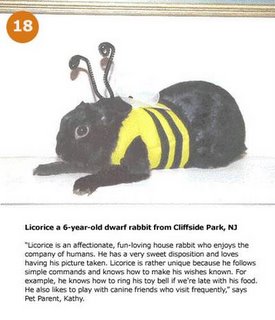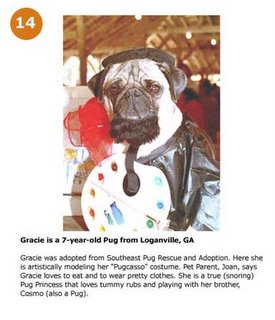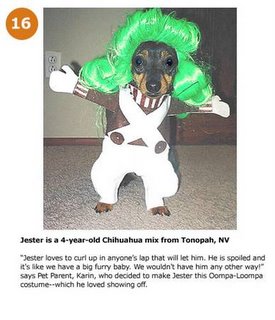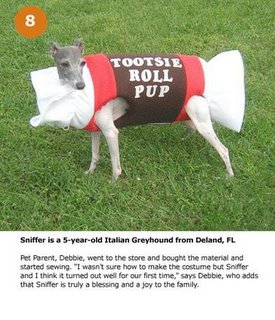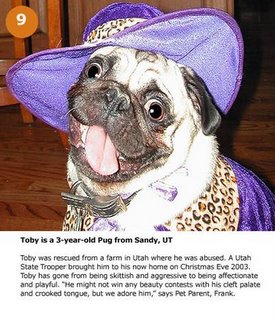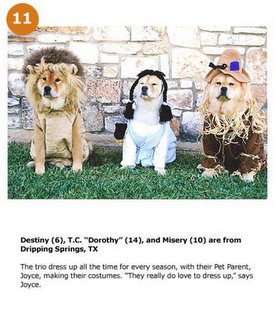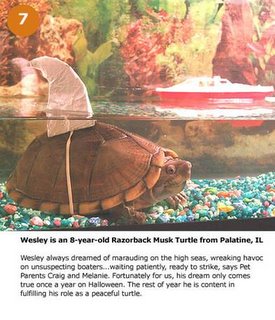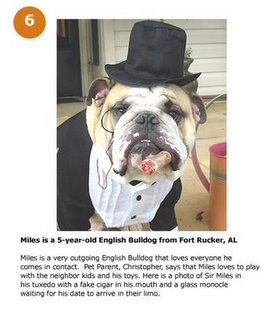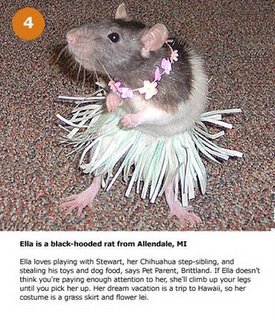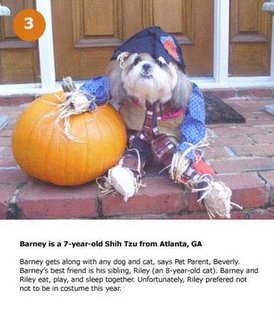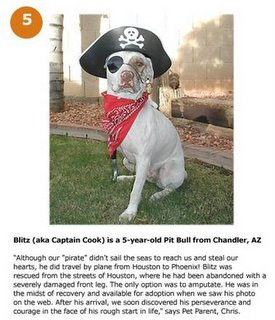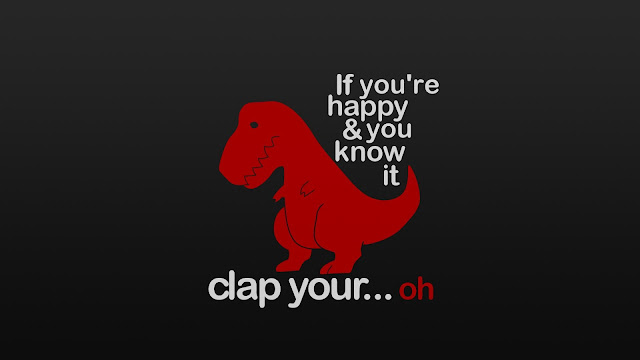
Welcome to 'OZ' - The 'Other' Side of the Rainbow!! Posting is at 10AM, Noon and 2PM CST daily. Up to 12 days of posts on the main page. The archives have more. You can forward posts by clicking on the envelope at the bottom of the post. Enjoy your stay! *** If you need to contact me, or have a copyright issue, please use the "Contact The Wizard" form on the left side of 'OZ'. Original source and author is cited and credited in each post where possible. ***
***Disclaimer***
Disclaimer: The Wizard of 'OZ' makes no money from 'OZ' - The 'Other' Side of the Rainbow. 'OZ' is 100 % paid ad-free
Thursday, October 31, 2019
Samhain
A Time of Clearing and Transformation “The word Samhain in contemporary Gaelic, designating the month of November, can only be reminiscent of the ancient druidic holiday celebrated at the beginning of the lunar month on the night of the full moon closest to November 1.” Jean Markale ‘The Pagan Mysteries of Halloween’ Samhain is many things: - the beginning of the new year - a time to honour and remember the Dead - marks a change in the rhythm of daily life - marks the dark half of the year, the beginning of winter - a time when the boundary between worlds is thin, making it a excellent time to communicate with the spirits of the dead - a time that is in between time. - a time of transformation - a time when deep inner spiritual work is undertaken, journeying into one’s shadow.
We are in the days approaching the great festival of Samhain. With each passing day the boundary between the world of the living and that of Spirit thins.
Samhain is a powerful, magickal time. Depending on the source you read it lasted any where from 3 nights to 7 nights around the time of the full moon. Where copious amounts of both food and alcohol were consumed. It stands in it’s own time, between time, between the old year and the new. It’s a time when great magick can be worked, communion with the Divine and the spirits of the dead is easier because of that thinning veil.
- by Alison Williams, Priestess-in-training and Sky River Temple Chair
We are in the days approaching the great festival of Samhain. With each passing day the boundary between the world of the living and that of Spirit thins.
Samhain is a powerful, magickal time. Depending on the source you read it lasted any where from 3 nights to 7 nights around the time of the full moon. Where copious amounts of both food and alcohol were consumed. It stands in it’s own time, between time, between the old year and the new. It’s a time when great magick can be worked, communion with the Divine and the spirits of the dead is easier because of that thinning veil.
- by Alison Williams, Priestess-in-training and Sky River Temple Chair
The 411 - Hallowe'en
Halloween or Hallowe'en (/ˌhæləˈwin, -oʊˈin, ˌhɒl-/; a contraction of "All Hallows' Evening") also known as All Hallows' Eve is a yearly celebration observed in a number of countries on October 31, the eve of the Western Christian feast of All Hallows (or All Saints) and the day initiating the triduum of Hallowmas, the time in the liturgical year dedicated to remembering the dead, including saints (hallows), martyrs, and all the faithful departed believers.
 According to many scholars, All Hallows' Eve is a Christianized feast initially influenced by Celtic harvest festivals, and festivals of the dead with possible pagan roots, particularly the Gaelic Samhain. Other scholars maintain that it originated independently of Samhain and has solely Christian roots.
According to many scholars, All Hallows' Eve is a Christianized feast initially influenced by Celtic harvest festivals, and festivals of the dead with possible pagan roots, particularly the Gaelic Samhain. Other scholars maintain that it originated independently of Samhain and has solely Christian roots. Typical festive Halloween activities include trick-or-treating (also known as "guising"), attending costume parties, decorating, carving pumpkins into jack-o'-lanterns, lighting bonfires, apple bobbing, visiting haunted attractions, playing pranks, telling scary stories, and watching horror films.
Typical festive Halloween activities include trick-or-treating (also known as "guising"), attending costume parties, decorating, carving pumpkins into jack-o'-lanterns, lighting bonfires, apple bobbing, visiting haunted attractions, playing pranks, telling scary stories, and watching horror films. The word Halloween or Hallowe'en dates to about 1745 and is of Christian origin. The word "Halloween" means "hallowed evening" or "holy evening". It comes from a Scottish term for All Hallows' Eve (the evening before All Hallows' Day). In Scots, the word "eve" is even, and this is contracted to e'en or een. Over time, (All) Hallow(s) E(v)en evolved into Halloween. Although the phrase "All Hallows'" is found in Old English (ealra hālgena mæssedæg, mass-day of all saints), "All Hallows' Eve" is itself not seen until 1556.
The word Halloween or Hallowe'en dates to about 1745 and is of Christian origin. The word "Halloween" means "hallowed evening" or "holy evening". It comes from a Scottish term for All Hallows' Eve (the evening before All Hallows' Day). In Scots, the word "eve" is even, and this is contracted to e'en or een. Over time, (All) Hallow(s) E(v)en evolved into Halloween. Although the phrase "All Hallows'" is found in Old English (ealra hālgena mæssedæg, mass-day of all saints), "All Hallows' Eve" is itself not seen until 1556.Today's Halloween customs are thought to have been influenced by folk customs and beliefs from the Celtic-speaking countries, some of which have pagan roots, and others which may be rooted in Celtic Christianity. Indeed, Jack Santino, an academic folklorist, writes that "the sacred and the religious are a fundamental context for understanding Halloween in Northern Ireland, but there as throughout Ireland an uneasy truce exists between customs and beliefs associated with Christianity and those associated with religions that were Irish before Christianity arrived." Historian Nicholas Rogers, exploring the origins of Halloween, notes that while "some folklorists have detected its origins in the Roman feast of
Pomona, the goddess of fruits and seeds, or in the festival of the dead called Parentalia, it is more typically linked to the Celtic festival of Samhain", which comes from the Old Irish for "summer's end". Samhain (pronounced sah-win or sow-in) was the first and most important of the four quarter days in the medieval Gaelic calendar and was celebrated in Ireland, Scotland and the Isle of Man. It was held on or about October 31 – November 1 and kindred festivals were held at the same time of year by the Brittonic Celts; for example Calan Gaeaf (in Wales), Kalan Gwav (in Cornwall) and Kalan Goañv (in Brittany). Samhain and Calan Gaeaf are mentioned in some of the earliest Irish and Welsh literature. The names have been used by historians to refer to Celtic Halloween customs up until the 19th century, and are still the Gaelic and Welsh names for Halloween.
 Samhain/Calan Gaeaf marked the end of the harvest season and the beginning of winter or the 'darker half' of the year. Like Beltane/Calan Mai, it was seen as a time when the spirits or fairies (the Sí) could more easily come into our world and were particularly active. The souls of the dead were also said to revisit their homes. Feasts were had, at which the souls of dead kin were beckoned to attend and a place set at the table for them. However, the spirits or fairies could also cause harm, and needed to be propitiated or warded-off. This is thought to have influenced today's Halloween customs. Bonfires, which were deemed to have protective and cleansing powers, were lit and sometimes used in divination rituals. At the household festivities in these areas, there were many rituals intended to divine the future of those gathered, especially with regard to death and marriage. Christian minister Eddie J. Smith has suggested that the bonfires have a later Christian origin and were used to scare witches of their awaiting punishment in hell.
Samhain/Calan Gaeaf marked the end of the harvest season and the beginning of winter or the 'darker half' of the year. Like Beltane/Calan Mai, it was seen as a time when the spirits or fairies (the Sí) could more easily come into our world and were particularly active. The souls of the dead were also said to revisit their homes. Feasts were had, at which the souls of dead kin were beckoned to attend and a place set at the table for them. However, the spirits or fairies could also cause harm, and needed to be propitiated or warded-off. This is thought to have influenced today's Halloween customs. Bonfires, which were deemed to have protective and cleansing powers, were lit and sometimes used in divination rituals. At the household festivities in these areas, there were many rituals intended to divine the future of those gathered, especially with regard to death and marriage. Christian minister Eddie J. Smith has suggested that the bonfires have a later Christian origin and were used to scare witches of their awaiting punishment in hell.In modern Ireland, Scotland, Mann and Wales, Halloween was celebrated by mumming and guising, the latter of which goes back at least as far as the 18th century. This involved people going from house to house in costume (or in disguise) reciting songs in exchange for food. It may have come from the Christian custom of souling (see below) or it may have an ancient Celtic origin, with the costumes being a means of imitating, or disguising oneself from, the spirits/fairies. In some places, young people dressed as the opposite gender. In parts of Wales, men went about dressed as fearsome beings called gwrachod. In parts of southern Ireland, the guisers included a hobby horse – a man dressed as a Láir Bhán (white mare) would lead youths house-to-house collecting food; by giving them food, the household could expect good fortune from the 'Muck Olla'. Elsewhere in Europe, mumming and hobby horses were a part of other festivals. However, they may have been "particularly appropriate to a night upon which supernatural beings were said to be abroad and could be imitated or warded off by human wanderers". When "imitating malignant spirits it was a very short step from guising to playing pranks". The guisers commonly played pranks in Ireland and the Scottish Highlands, and this practice spread to England in the 20th century.
The "traditional illumination for guisers or pranksters abroad on the night in some places was provided by turnips or mangel wurzels, hollowed out to act as lanterns and often carved with grotesque faces to represent spirits or goblins". These were common in parts of Ireland and the Scottish Highlands in 19th century. They were also found in Somerset. In the 20th century they spread to other parts of England and became generally known as jack-o'-lanterns.
 Today's Halloween customs are also thought to have been influenced by Christian dogma and practices derived from it. Halloween falls on the evening before the Christian holy days of All Hallows' Day (also known as All Saints', Hallowmas or Hallowtide) on November 1 and All Souls' Day on November 2, thus giving the holiday on October 31 the full name of All Hallows' Eve. These three days are collectively referred to as Hallowmas and are a time for honoring the saints and praying for the recently departed souls who have yet to reach Heaven. All Saints was introduced in the year 609, but was originally celebrated on May 13. In 835, it was switched to November 1 (the same date as Samhain) at the behest of Pope Gregory IV, on the "practical grounds that Rome in summer could not accommodate the great number of pilgrims who flocked to it", and perhaps because of public health considerations regarding Roman Fever, a disease that claimed a number of lives during the sultry summers of the region. Some have suggested this was due to Celtic influence, while others suggest it was a Germanic idea.
Today's Halloween customs are also thought to have been influenced by Christian dogma and practices derived from it. Halloween falls on the evening before the Christian holy days of All Hallows' Day (also known as All Saints', Hallowmas or Hallowtide) on November 1 and All Souls' Day on November 2, thus giving the holiday on October 31 the full name of All Hallows' Eve. These three days are collectively referred to as Hallowmas and are a time for honoring the saints and praying for the recently departed souls who have yet to reach Heaven. All Saints was introduced in the year 609, but was originally celebrated on May 13. In 835, it was switched to November 1 (the same date as Samhain) at the behest of Pope Gregory IV, on the "practical grounds that Rome in summer could not accommodate the great number of pilgrims who flocked to it", and perhaps because of public health considerations regarding Roman Fever, a disease that claimed a number of lives during the sultry summers of the region. Some have suggested this was due to Celtic influence, while others suggest it was a Germanic idea.By the end of the 12th century they had become holy days of obligation across Europe and involved such traditions as ringing church bells for the souls in purgatory. In addition, "it was customary for criers dressed in black to parade the streets, ringing a bell of mournful sound and calling on all good Christians to remember the poor souls." "Souling", the custom of baking and sharing soul cakes for all christened souls, has been suggested as the origin of trick-or-treating. The custom was found in parts of England and dates back at least as far as the 15th century. Groups of poor people, often children, would go door-to-door during Hallowmas, collecting soul cakes, originally as a means of praying for souls in purgatory. Similar practices for the souls of the dead were found as far south as Italy. Shakespeare mentions the practice in his comedy The Two Gentlemen of Verona (1593), when Speed accuses his master of "puling [whimpering or whining] like a beggar at Hallowmas." The custom of wearing costumes has been explicated by Prince Sorie Conteh, who wrote: "It was traditionally believed that the souls of the departed wandered the earth until All Saints' Day, and All Hallows' Eve provided one last chance for the dead to gain vengeance on their enemies before moving to the next world. In order to avoid being recognised by any soul that might be seeking such vengeance, people would don masks or costumes to disguise their identities". Imagery of the skull, a reference to Golgotha, in the Christian tradition, serves as "a reminder of death and the transitory quality of human life" and is consequently found in memento mori and vanitas compositions; skulls have therefore been commonplace in Halloween, which touches on this theme.
Traditionally, the back walls of churches are "decorated with a depiction of the Last Judgment, complete with graves opening and the dead rising, with a heaven filled with angels and a hell filled with devils," a motif that has permeated the observance of this triduum. Academic folklorist Kingsley Palmer, in addition to others, has suggested that the carved jack-o'-lantern, a popular symbol of Halloween, originally represented the souls of the dead. On Halloween, in medieval Europe, "fires [were] lit to guide these souls on their way and deflect them from haunting honest Christian folk." In addition, households in Austria, England, Ireland often had "candles burning in every room to guide the souls back to visit their earthly homes". These were known as “soul lights”
 In parts of Britain, these customs came under attack during the Reformation as some Protestants berated purgatory as a "popish" doctrine incompatible with the notion of predestination. Thus, for some Nonconformist Protestants, the theology of All Hallows’ Eve was redefined; without the doctrine of purgatory, "the returning souls cannot be journeying from Purgatory on their way to Heaven, as Catholics frequently believe and assert. Instead, the so-called ghosts are thought to be in actuality evil spirits. As such they are threatening." Other Protestants maintained belief in an intermediate state, known as Hades (Bosom of Abraham), and continued to observe the original customs, especially candlelit processions and the ringing of church bells in memory of the dead. With regard to the evil spirits, on Halloween, "barns and homes were blessed to protect people and livestock from the effect of witches, who were believed to accompany the malignant spirits as they traveled the earth." In the 19th century, in parts of England, Christian families gathered on hills on the night of All Hallows' Eve. One held a bunch of burning straw on a pitchfork while the rest knelt around him in a circle, praying for the souls of relatives and friends until the flames went out. This was known as teen'lay, derived either from the Old English tendan (meaning to kindle) or a word related to Old Irish tenlach (meaning hearth). The rising popularity of Guy Fawkes Night (5 November) from 1605 onward, saw many Halloween traditions appropriated by that holiday instead, and Halloween's popularity waned in Britain, with the noteworthy exception of Scotland. There and in Ireland, they had been celebrating Samhain and Halloween since at least the early Middle Ages, and the Scottish kirk took a more pragmatic approach to Halloween, seeing it as important to the life cycle and rites of passage of communities and thus ensuring its survival in the country. In France, Christians, on the night of All Hallows' Eve, prayed beside the graves of their loved ones, setting down dishes full of milk for them. On Halloween, in Italy, families left a large meal out for ghosts of their passed relatives, before they departed for church services. In Spain, women, on this night, made special pastries known as “bones of the holy” (Spanish: Huesos de Santo) and put them on the graves of the churchyard, a practice that continues to this day.
In parts of Britain, these customs came under attack during the Reformation as some Protestants berated purgatory as a "popish" doctrine incompatible with the notion of predestination. Thus, for some Nonconformist Protestants, the theology of All Hallows’ Eve was redefined; without the doctrine of purgatory, "the returning souls cannot be journeying from Purgatory on their way to Heaven, as Catholics frequently believe and assert. Instead, the so-called ghosts are thought to be in actuality evil spirits. As such they are threatening." Other Protestants maintained belief in an intermediate state, known as Hades (Bosom of Abraham), and continued to observe the original customs, especially candlelit processions and the ringing of church bells in memory of the dead. With regard to the evil spirits, on Halloween, "barns and homes were blessed to protect people and livestock from the effect of witches, who were believed to accompany the malignant spirits as they traveled the earth." In the 19th century, in parts of England, Christian families gathered on hills on the night of All Hallows' Eve. One held a bunch of burning straw on a pitchfork while the rest knelt around him in a circle, praying for the souls of relatives and friends until the flames went out. This was known as teen'lay, derived either from the Old English tendan (meaning to kindle) or a word related to Old Irish tenlach (meaning hearth). The rising popularity of Guy Fawkes Night (5 November) from 1605 onward, saw many Halloween traditions appropriated by that holiday instead, and Halloween's popularity waned in Britain, with the noteworthy exception of Scotland. There and in Ireland, they had been celebrating Samhain and Halloween since at least the early Middle Ages, and the Scottish kirk took a more pragmatic approach to Halloween, seeing it as important to the life cycle and rites of passage of communities and thus ensuring its survival in the country. In France, Christians, on the night of All Hallows' Eve, prayed beside the graves of their loved ones, setting down dishes full of milk for them. On Halloween, in Italy, families left a large meal out for ghosts of their passed relatives, before they departed for church services. In Spain, women, on this night, made special pastries known as “bones of the holy” (Spanish: Huesos de Santo) and put them on the graves of the churchyard, a practice that continues to this day. North American almanacs of the late 18th and early 19th century give no indication that Halloween was celebrated there. The Puritans of New England, for example, maintained strong opposition to Halloween, and it was not until the mass Irish and Scottish immigration during the 19th century that it was brought to North America in earnest. Confined to the immigrant communities during the mid-19th century, it was gradually assimilated into mainstream society and by the first decade of the 20th century it was being celebrated coast to coast by people of all social, racial and religious backgrounds.
North American almanacs of the late 18th and early 19th century give no indication that Halloween was celebrated there. The Puritans of New England, for example, maintained strong opposition to Halloween, and it was not until the mass Irish and Scottish immigration during the 19th century that it was brought to North America in earnest. Confined to the immigrant communities during the mid-19th century, it was gradually assimilated into mainstream society and by the first decade of the 20th century it was being celebrated coast to coast by people of all social, racial and religious backgrounds.Trick-or-treating is a customary celebration for children on Halloween. Children go in costume from house to house, asking for treats such as candy or sometimes money, with the question, "Trick or treat?" The word "trick" refers to "threat" to perform mischief on the homeowners or their property if no treat is given. The practice is said to have roots in the medieval practice of mumming, which is closely related to souling (discussed above). John Pymm writes that "many of the feast days associated with the presentation of mumming plays were celebrated by the Christian Church." These feast days included All Hallows' Eve, Christmas, Twelfth Night and Shrove Tuesday. Mumming, practised in Germany, Scandinavia and other parts of Europe, involved masked persons in fancy dress who "paraded the streets and entered houses to dance or play dice in silence." Their "basic narrative framework is the story of St. George and the Seven Champions of Christendom."
 In Scotland and Ireland, guising – children disguised in costume going from door to door for food or coins – is a traditional Halloween custom, and is recorded in Scotland at Halloween in 1895 where masqueraders in disguise carrying lanterns made out of scooped out turnips, visit homes to be rewarded with cakes, fruit and money. The practice of Guising at Halloween in North America is first recorded in 1911, where a newspaper in Kingston, Ontario reported children going "guising" around the neighborhood.
In Scotland and Ireland, guising – children disguised in costume going from door to door for food or coins – is a traditional Halloween custom, and is recorded in Scotland at Halloween in 1895 where masqueraders in disguise carrying lanterns made out of scooped out turnips, visit homes to be rewarded with cakes, fruit and money. The practice of Guising at Halloween in North America is first recorded in 1911, where a newspaper in Kingston, Ontario reported children going "guising" around the neighborhood.American historian and author Ruth Edna Kelley of Massachusetts wrote the first book length history of Halloween in the US; The Book of Hallowe'en (1919), and references souling in the chapter "Hallowe'en in America":
The taste in Hallowe'en festivities now is to study old traditions, and hold a Scotch party, using Burn's poem Hallowe'en as a guide; or to go a-souling as the English used. In short, no custom that was once honored at Hallowe'en is out of fashion now.
*From Wikipedia, the free encyclopedia
Blessed Samhain
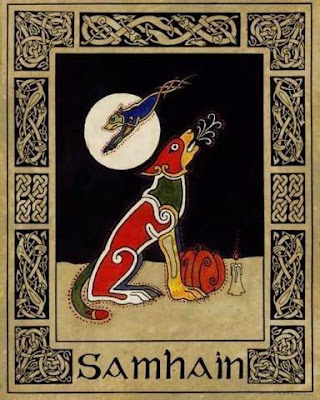
Shall burn
And the wheel of life
Shall turn
And the dead will come home, on Samhain
And then
The night sky
On a lunar light
midnight
And the dead will come home, on Samhain
Little children
Dress like beasts
In the lamp-lit
Dark streets
And the dead come alive, on Samhain
Come away
From this island earth
Come back to
The moment of your birth
And the dead come alive, on Samhain
Ever since
The dawn of time
This day has been for them
Lay your minds on the line
And await the dead, on Samhain
When the wall
Grows thin
Allows the dead
To come in
So await the dead, on Samhain
I will see you, come Samhain
------------------
Glen Whitman, Gather.com
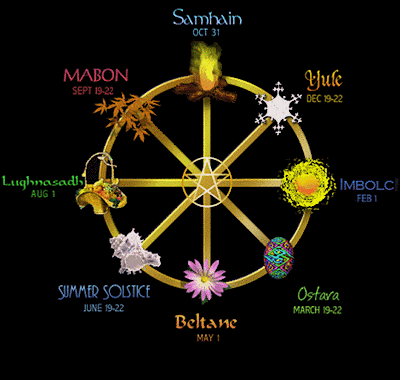
*Pronounced: SOW-in (as in "cow"), (or sometimes sew-WIN)
For more pagan pronunciations, click here.
**Read about Samhain
Shopping Carts and Rationalizations
by Michael Josephson, in Choices, Commentaries, The Nature of Character
Please return to the Blog Home Page www.whatwillmatter.com and browse to see other current and archived commentaries, quotes and other good stuff.
When we think about character, we tend to envision really big things, like taking heavy risks, committing bold acts of integrity, being grandly generous, or making tough sacrifices.
Such noble choices indicate character, but for the most part, our integrity is revealed in much smaller events, like apologizing when we’re wrong, giving to causes we believe in, being honest when it may be embarrassing, or returning shopping carts.
One of my favorite stories is about a father who asked his son to return a cart they had just used. The son protested, “C’mon, Dad. There are carts all over. No one returns them. That's why they hire people to collect them.”
After a short argument, mom chimed in, “For heaven's sake, it's no big deal. Let's go.”
Dad was about to surrender when he saw an elderly couple walking together to return their cart.
He said, “Son, there are two kinds of people in this world: those who put their carts away and those who don't. We're the kind who return theirs. Now go return the cart.”
Which kind are you?
This is Michael Josephson reminding you that character counts.
Please return to the Blog Home Page www.whatwillmatter.com and browse to see other current and archived commentaries, quotes and other good stuff.
Wednesday, October 30, 2019
Giggles, Guffaws and Groaners
A young man tutored his sweetheart maths,
he thought of it as his mission,
he kissed her once then once again and said
"There, that's addition!"
She took it upon herself to return the pleasant action,
she kissed once and once again,
smiled and said "and that's subtraction!"
Now she'd learned the basics without too much complication,
they kissed each other once, then twice,
and said "that must be multiplication!"
Meanwhile the young lady's father
had this 'lesson' in his vision,
he kicked that boy ten foot out the door and said
"Then that is long division!"

Three young boys were boasting about their grandpas. The first boy said: "My grandpa is a great swimmer. He can swim for hours before getting out of the water!" The second boy said, "That's nothing. My grandpa always goes swimming at 6:00 in the morning every day, and only comes back at 9:00 pm because my mom says he has to!" The third boy says, "Your grandpas are both bad at swimming! My grandpa started swimming in this pond 20 years ago, and he hasn't come out since!!!"

One day a man is walking down the street when he sees an old man with a nice looking dog. He goes over to the man and asks: 'does your dog bite?' the old man replies 'No never'. When the man bends down to stroke the dog, it immediately takes a snap at his hand. The man says 'I thought you said your dog did not bite! 'I did' replies the old man, but this isn't my dog!'

Mo attends to a revival and listens to the sermon. After a while, the pastor asks anyone with needs to come forward and be prayed over. Mo gets in line and, when it’s his turn the pastor asks, “Mo, what do you want me to pray about?” Mo says, “Pastor, I need you to pray for my hearing.” So the pastor puts one finger in Mo’s ear and the other hand on top of his head and prays for a while. He removes his hands and says, “Mo how’s your hearing now?” Mo says, “I don’t know pastor, it’s not until next Monday.

Q. Why did Mrs. Smokey the Bear divorce Smokey the Bear?
A. Because every time she got hot, he'd beat her with a shovel!
Subscribe to:
Comments (Atom)





.jpg)
